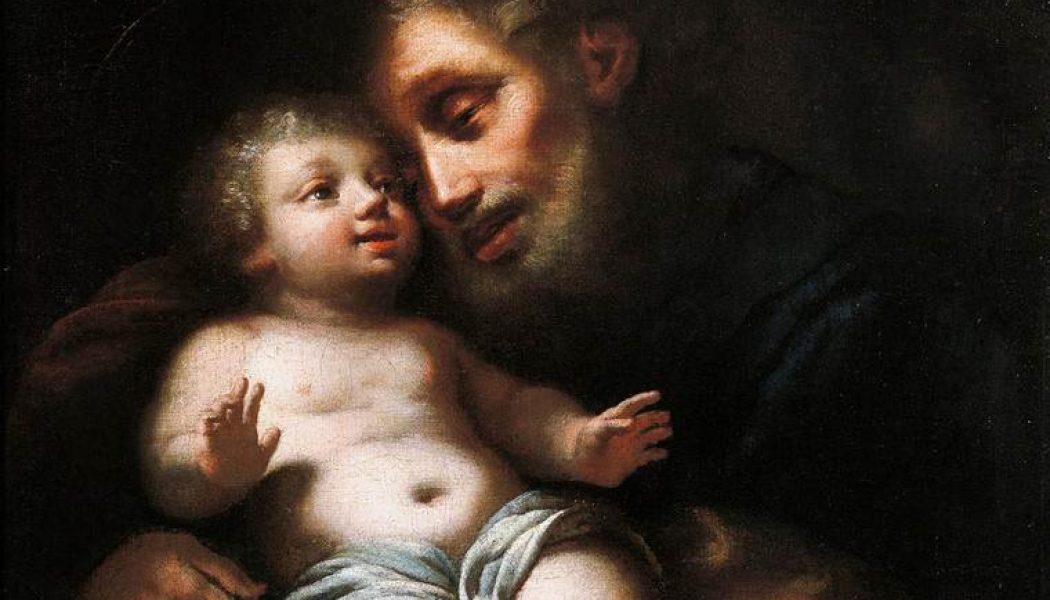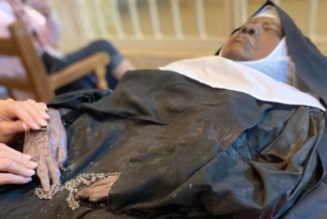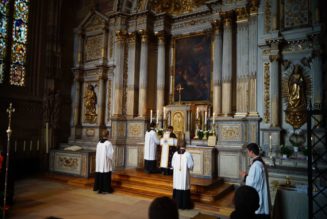
COMMENTARY: For the feast of St. Joseph the Worker, the Holy See’s Congregation for Divine Worship added seven new invocations to the Litany of St. Joseph.
Of the lengthening of litanies, there is no end.
For the feast of St. Joseph the Worker, the Holy See’s Congregation for Divine Worship added seven new invocations to the Litany of St. Joseph.
Given in Latin, the translations will be up to the national bishops’ conferences. The seven new additions were approved by Pope Francis and are taken from the writings of the recent popes. They are (with an unofficial translation):
· Custos Redemptoris (Guardian of the Redeemer), the title of Pope St. John Paul II’s 1989 apostolic exhortation on St. Joseph.
· Serve Christi (Servant of Christ), taken from the homily of Pope St. Paul VI for St. Joseph’s feast day in 1966.
· Minister Salutis (Minister of Salvation), a title used by St. John Chrysostom, quoted by John Paul in 1989.
· Fulcimen in Difficultatibus (Guide/Supporter in Difficulties), from the 2020 apostolic letter Patris corde, issued by Pope Francis for the 150th anniversary of the 1870 declaration of St. Joseph as Patron of the Universal Church.
· Patrone Exsulum (Patron/Protector of Exiles), from Patris Corde.
· Patrone Afflictorum (Patron/Protector of the Afflicted), from Patris Corde.
· Patrone Pauperum (Patron/Protector of the Poor), from Patris Corde.
“Minister Salutis” may be translated differently into English. “Minister” in Latin can also mean “server” — as in the altar server at Holy Mass. In English it usually has the sense of senior official or administrator — cabinet “ministers” for example.
The new additions emphasize St. Joseph’s patronage for the suffering, as there are now two references in the litany to the poor (Lover of the Poor) and the afflicted (Solace of the Afflicted/Wretched).
The most famous addition to the cult of St. Joseph in recent times was the institution of the Feast of St. Joseph the Worker by Venerable Pope Pius XII in 1955. The decree from the congregation was dated for that feast day, May 1, 2021. The new additions do not refer to workers, as there is already an invocation of Joseph as “Model of Workers/Artisans” in the litany.
Also, in 1962, the name of St. Joseph was inserted by Pope St. John XXIII into the Roman Canon (First Eucharistic Prayer). In 2013, implementing a decision by Pope Benedict XVI, Pope Francis added St. Joseph to the other three Eucharistic prayers.
Official Litanies
Litanies are not liturgical acts, and are most often prayed privately, though there are occasions where there is public recitation. For the most part, therefore, they are governed by custom and local practice, without the Apostolic See defining their content or governing their usage.
For example, the Litany of Blessed Pier Giorgio Frassati is often prayed at Frassati Houses of young men; St. John Henry Newman’s Litany of St. Philip Neri is a standard at Oratorian houses; and St. John Paul II made the Litany of Jesus Christ, Priest and Victim, popular in seminaries, given his own custom of praying it in the seminary.
There are however six “official” litanies, inasmuch as they are approved by Rome for public recitation and there is an official approved list of invocations.
The six are: Litany of the Saints, Litany of Loreto (Blessed Virgin Mary), Litany of the Holy Name of Jesus, Litany of the Sacred Heart of Jesus, Litany of the Most Precious Blood of Jesus and the Litany of St. Joseph.
Even the official litanies are often subject to local adaptation. For example, it is very common to add local patrons to the Litany of the Saints. And in many place, local Marian shrines or titles are added to the Litany of Loreto. Indeed, the decree adding the seven new invocations for St. Joseph allows for local bishops’ conferences to add other titles for St. Joseph that are of local importance.
A traditional, if informal, Catholic practice is for families to have their own “litany.” At family prayers, the name of each child’s patron saint can be invoked in a short family litany.
Litany of Loreto
The most well-known and often prayed litany is the Litany of Loreto, or Litany of the Blessed Virgin Mary. Very often it is recited after praying the Rosary, and it is quite commonly prayed at Marian devotions or on Marian feasts.
It too has had recent additions made. Pope Leo XIII added “Mother of Good Counsel” in 1903 and, during the Great War, Pope Benedict XV added “Queen of Peace” in 1916.
Building upon St. Paul VI’s declaration of Mary as Mother of the Church at the conclusion of Vatican II, St. John Paul II added “Mother of the Church” to the litany in 1980. In 1995, he added “Queen of Families” after the U.N. Year of the Family 1994.
Last year, on the Immaculate Heart of Mary (June 20, 2020), Pope Francis added three new invocations: “Mother of Mercy,” “Mother of Hope” and “Solace of Migrants.”
It is likely that the seven new invocations for St. Joseph were intended to match the seven new invocations added to the Litany of Loreto in recent times.
Trinitarian Beginning — Christological End
No matter the particular devotion of the various litanies, the general template is a reminder of the Trinitarian and Christological shape of the Catholic faith. Litanies generally begin with the invocation of the three Persons of the Blessed Trinity — “God, the Father of heaven, have mercy on us. … Holy Trinity, one God, have mercy on us” — and end with the triplex invocation of Jesus as the “Lamb of God.” With the new additions, the St. Joseph litany will maintain that same structure.
Join Our Telegram Group : Salvation & Prosperity









